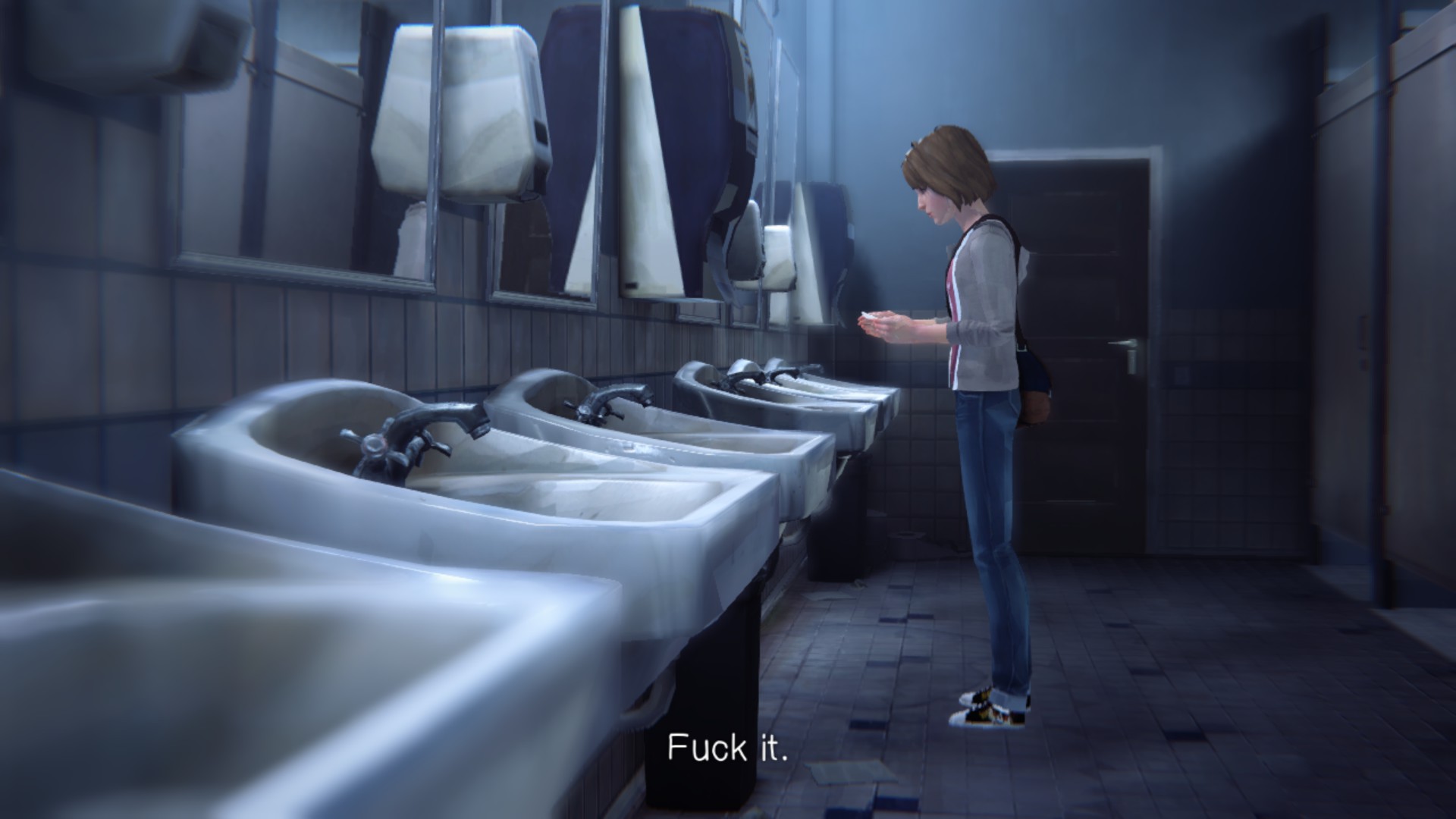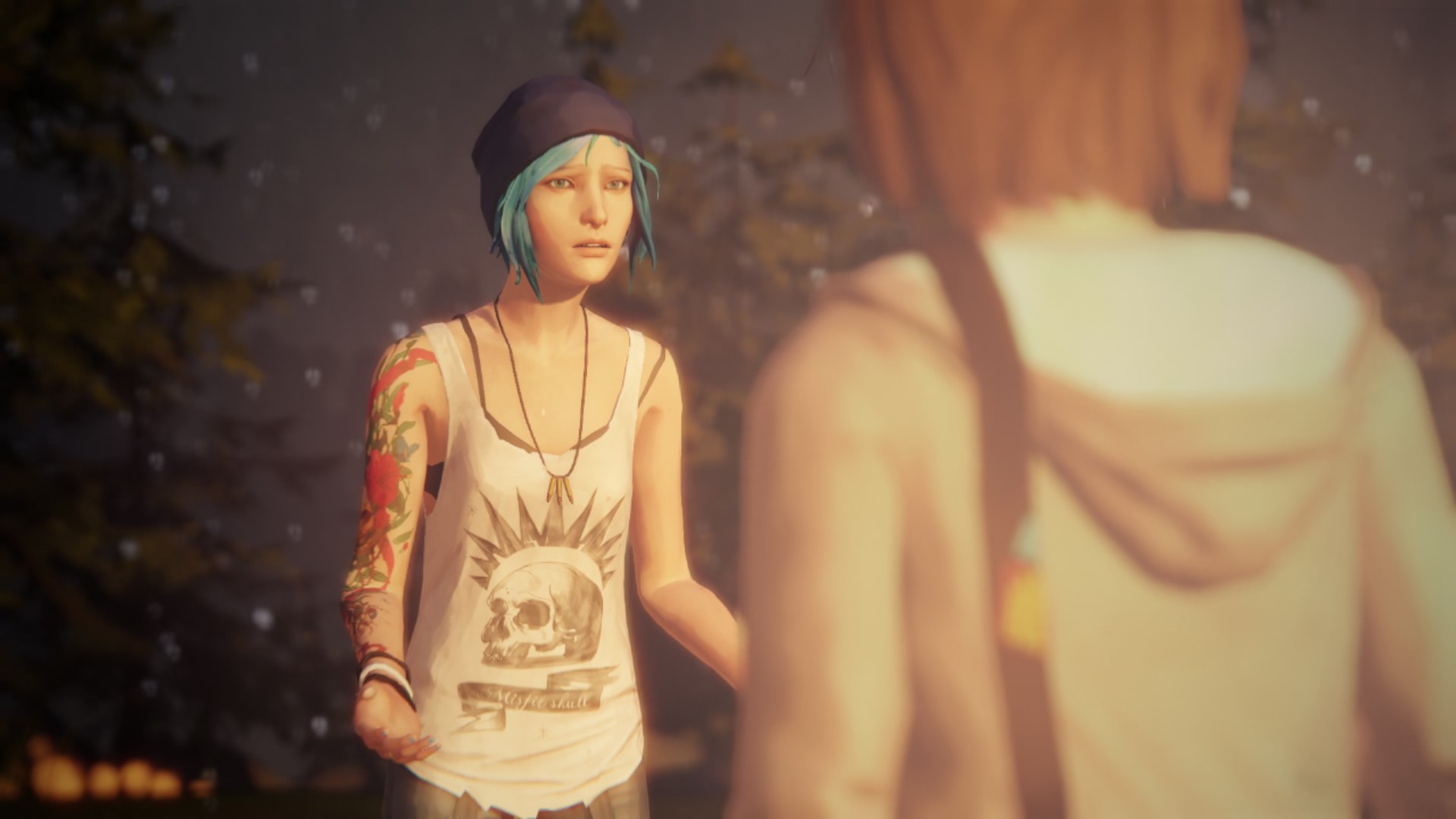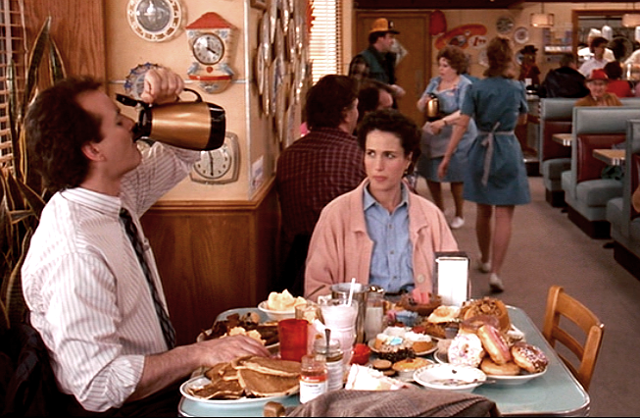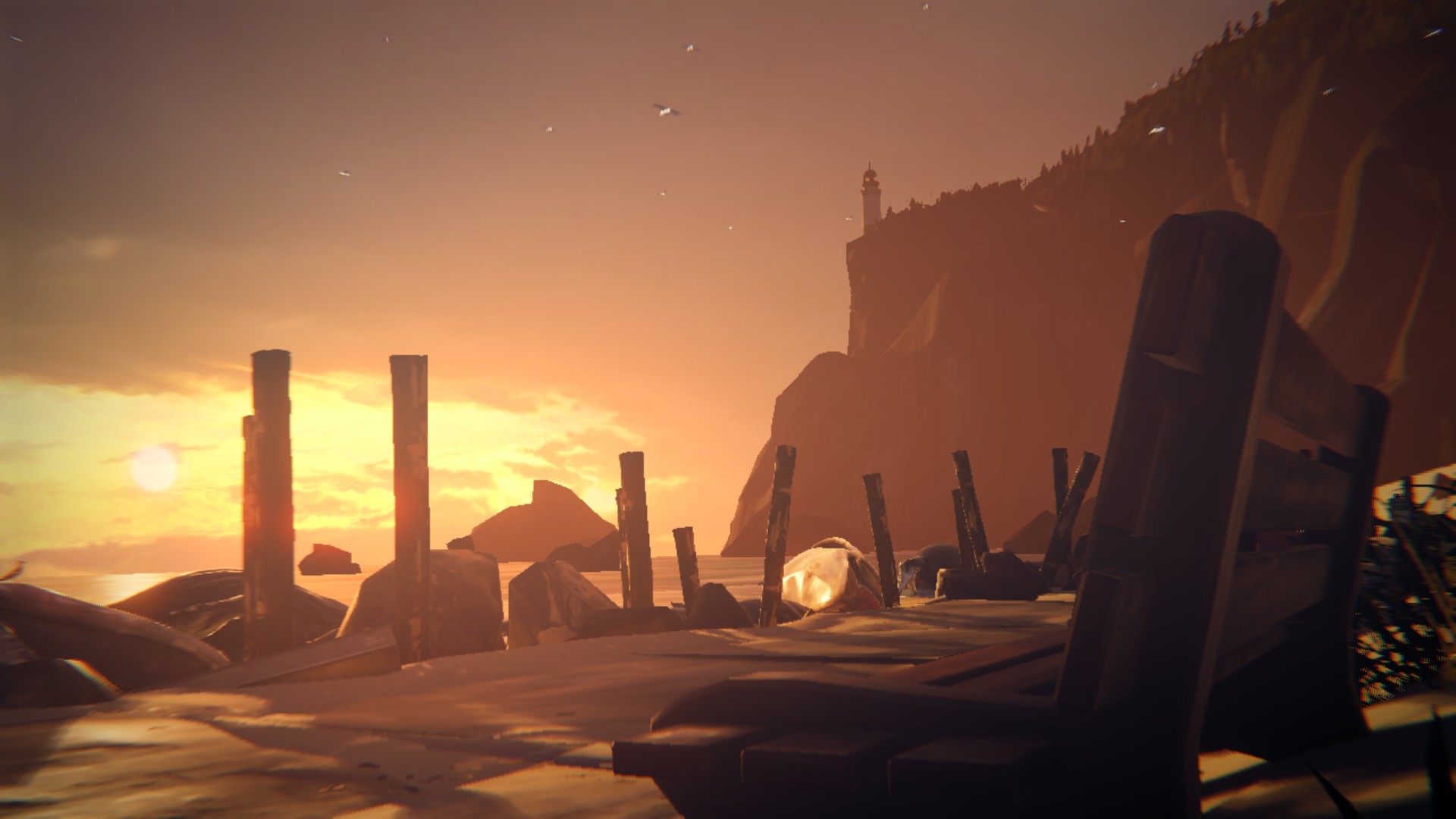Life is Strange: a Groundhog Day Simulator
At the beginning on my time on Life is Strange, I was kind of convinced that this was yet another episodic adventure game in the same vein as the various Telltales series (Walking Dead, Tales of the Borderlands, etc…). You know what I’m talking about: games mainly articulated around dialogues, where your choices lead to some branches later on in the storyline. Nothing too fancy. Pleasant, but not really innovative.

Life is Strange provides an extra neat trick: you play the role of Max, a teenage girl who can “rewind time” (usually limited to short durations) to experiment and see what other answers/actions would have led to. At first, I did not think much of it. OK, it’s fun, but why would I go and rewind stuff so much anyway ? After all, you could already do the same thing in other adventure games if you really wanted to, by using quick save/quick load functions. I realized later in the game that making it possible from the get go is what changes everything. You start off by averting the death of a friend who was to be shot in the woman’s toilets. Then it all builds up from here. This all gets really interesting when the friend you saved, Chloe, gets to know about your powers.
This leads to a number of very new situations, not possible in usual adventure games. At one point, after telling her about your powers, you want to prove to her that you are not just kidding. She asks you to guess what she has in her pockets. So you go ahead, first guessing, obviously, until she shows that you were wrong by getting her stuff out. Then you rewind time, and go back to the point when she asked you to tell her what’s in her pockets. And now, you can tell her the exact contents of her pockets and act like a God.

This is very much like a teenager version of the diner scene in Groundhog Day where Bill Murray (aka Phil) can say exactly what’s going to happen around him as he’s having breakfast, because he has seen it before a hundred times. In Groundhog Day, Phil gets an automatic rewind at midnight to the start of the same day, so he gets to go through all different branches of the very same day, and exploit the possibilities offered by gaining that knowledge.

This very same idea gives the game additional depth, in unexpected ways. Unlike in Telltales games, there is an actual point of trying stuff out now and then. Sometimes there are just wrong choices that you want to avoid, making it therefore necessary to rewind. Some other times, there is not really any single, ideal outcome. The most interesting situations occur when there are mostly bad choices, or compromises, and no matter how many times you try, things get fucked up pretty bad in their own ways. Then it’s up to you to guess what situation will actually be preferable in the end. It makes you consider your choices a lot more. It’s so much better than Telltales’ indication that “X character you do not care about right now will remember that and fuck you up three episodes later”. Hardly helpful. Here, the implications are much more tangible and you can easily imagine what could happen next.

The rewind function sometimes becomes a way to do damage control. There is this particular scene, where you are with Chloe interacting with someone else. Through several rewinds, you already know that things are going to get sour anyway, no matter what options you seem to choose… then Max suddenly starts by telling Chloe, who is by then aware of her power, that “this situation is about to go bad”, because you/Max has seen the possible outcomes already. Chloe does the sensible thing and asks for advice on how she should adjust her behaviour. Her change of behavior opens up new possibilities in the situation, making it possible to get to a slightly better outcome.
This is a very, very clever game mechanic. It’s extremely powerful when you see it in action.
There’s really no other game around that can provide that kind of a twist. And while it revolves around teenagers, the themes it deals with are rather serious, not shying away from real world issues like domestic violence, divorce, teenage suicide, online harassment, and so on. And just like in the real world, there are not always straight forward answers for such issues - the great thing with Max and Chloe is that they have very different personalities and very different takes on the problems they face, making it easier to relate to why people may have opposing views.

On top of its clever mechanics, the writing is very good most of the time, and the story goes crescendo especially in episode 3 and 4. There is clearly a little bit of Twin Peaks or even Time Hollow (an excellent DS game from Konami I’d recommend to anyone) in Life is Strange. An ongoing mystery that begs to be unveiled. Not everything seems like a clue but it all comes together as you move from one episode to the next, building up your expectations bit by bit. There are some genuine moments of tension, sadness and happiness.

I can’t say I am usually moved by games but wow, did Life is Strange deliver! It’s not about childish claims such as “God, this game made me cry!” but rather, this game made me care! Just like some of the best TV series, once you get started you can’t really stop until you reach the end. It pushes all the right buttons to keep your interest high. It successfully introduces and involves many characters, and the bond between the protagonists, Chloe and Max, has a very authentic feel. Most of the dialogues do not sound off. This would not have been possible without stellar voice acting talent. Voice actors were very much involved in their characters and it shows.

The location of the action matters as well. It takes place in a fictitious city called Arcadia Bay, inspired by places from Oregon in North America. While Max is a student and spends most of her time studying or in her dorm, when you are out with Chloe you go around the city from one location to the next, sometimes looking for clues, or simply spending time with your friend. There are tons of little details to be discovered in each location, not necessarily relevant to the story, but just there to make things a lot more believable and rich.
At the University, Max is an art student and her thing is Photography. I don’t think this is an accident. The whole game features beautiful photography, almost always respecting the rule of thirds and playing with light effects. Together with the soundtrack, such aspects give the game a very relaxing tone. Its own very unique voice. And the photography theme plays a major role later on in the story as well.

It’s actually a shame graphics are not as good as you’d expect. You can see the game was made for consoles in the first place - especially when it comes to shitty-looking textures… but developers still managed to create beautiful scenes despite the obvious limitations. The characters’ animation is very good, too - except for the facial expressions, a bit too static and doll-like to my taste. If there’s one game where I would not consider a “HD remaster” to be a waste of time, that would probably be it.

The Linux port is great, by the way. This is not a game with fast paced action so fighting for the best framerate count does not matter so much here, and on my GTX970 is was completely smooth anyway, all options maxed up. Since whatever is rendered on screen is from last-generation consoles, most modern cards should have no issue dealing with it. I completed the game from start to end and encountered very few problems (I was part of the beta provided by Feral and they addressed the issues that were found - hopefully paving the way for a clean release). I played it entirely with the Steam Controller and this was a very good choice for this kind of game. As far as I can tell, Feral did a very good job here, and selected just the right game for us. This is truly a great addition to the Linux offering.

So there you have it. Don’t Nod did really well with Life is Strange and when you do complete the game, I would recommend you to watch the director’s commentary (free DLC) since it gives a nice overview about how they designed the game. I will be certainly watching what the guys from Don’t Nod do next.
By the way, you can apparently get the First Episode of Life is Strange for free since July 21st. There’s no better way to check it out.
Note: All pictures from this article are screenshots from the Linux version (running on i5 3.4 Ghz + nVidia GTX970, SteamOS 2.70 stable).
